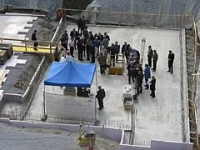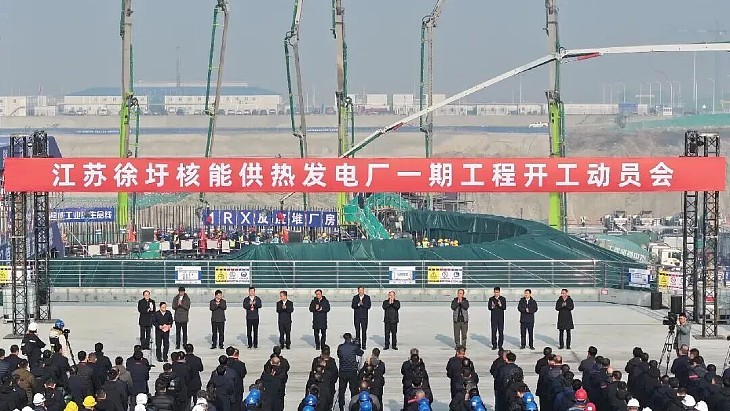US-based GE Fanuc Intelligent Platforms has won a $1 million order for subsystem components for a new simulator being built at Germany's training facility for nuclear plant operators.
 |
Laying the foundation stone for the D46 simulator, May 2009 (Image: KSG/GfS) |
KSG (Kraftwerks-Simulator-Gesellschaft MbH) has ordered CPU blades, I/O controllers and subsystems for the D46 simulator, due to become operational in 2010. GE Fanuc also received an additional $100,000 order for associated software and support.
Construction of the D46 simulator, which replicates the 1360 MWe Grohnde pressurised water reactor (PWR) plant, formally began in May. Currently Grohnde's operators are trained on a simulator that replicates the Grafenrheinfeld plant.
Simulators are used throughout the world to train nuclear power plant operators. The KSG/GfS Simulatorzentrum (simulator centre) at Essen was founded in 1977 and is the largest of its kind in the world. Over 2000 trainees from 17 nuclear power plants in Germany and the Netherlands pass through its doors every year to hone their operating skills on the centre's 13 simulators.
Apart from the D53 simulator, which references the Netherlands' Borssele PWR, all the simulators reference German power plants. The centre is operated by GfS (Gesellschaft für Simulatorschulung MbH), which carries out training, and KSG which is in charge of the simulators and other infrastructure. It is jointly owned by four German nuclear operators (EOn, RWE, EnBW and Vattenfall) and Dutch operator EPZ.
The KSG/GfS simulators exactly replicate the referenced nuclear power plant in both appearance and technical, physical and temporal behaviour including an almost perfect reproduction of the plant's control room. All the other plant components and buildings are simulated by software, calculating 100,000 to 200,000 parameters several times a second to reproduce the behaviour of every component and instrument in the power plant in real time. Each action of the operating team leads to the same results in the simulator as it would in the real power plant.
GE Fanuc's system is based on a technology known as 'reflective memory'. Simulators require significant amounts of distributed computing power, and the sharing of large arrays of volatile data in real time, and according to Rubin Dhillon, the company's communications product manager, reflective memory technology is well suited to this. "Many of these applications are turning to reflective memory because it is a highly scalable, simple solution that offers much lower latency and a higher degree of determinism than alternative solutions, making systems both faster and more robust."
GE Fanuc Intelligent Platforms, based in the USA, is a joint venture of General Electric and Fanuc Ltd of Japan.





_28178.jpg)
_66891.jpg)
_55296.jpg)





